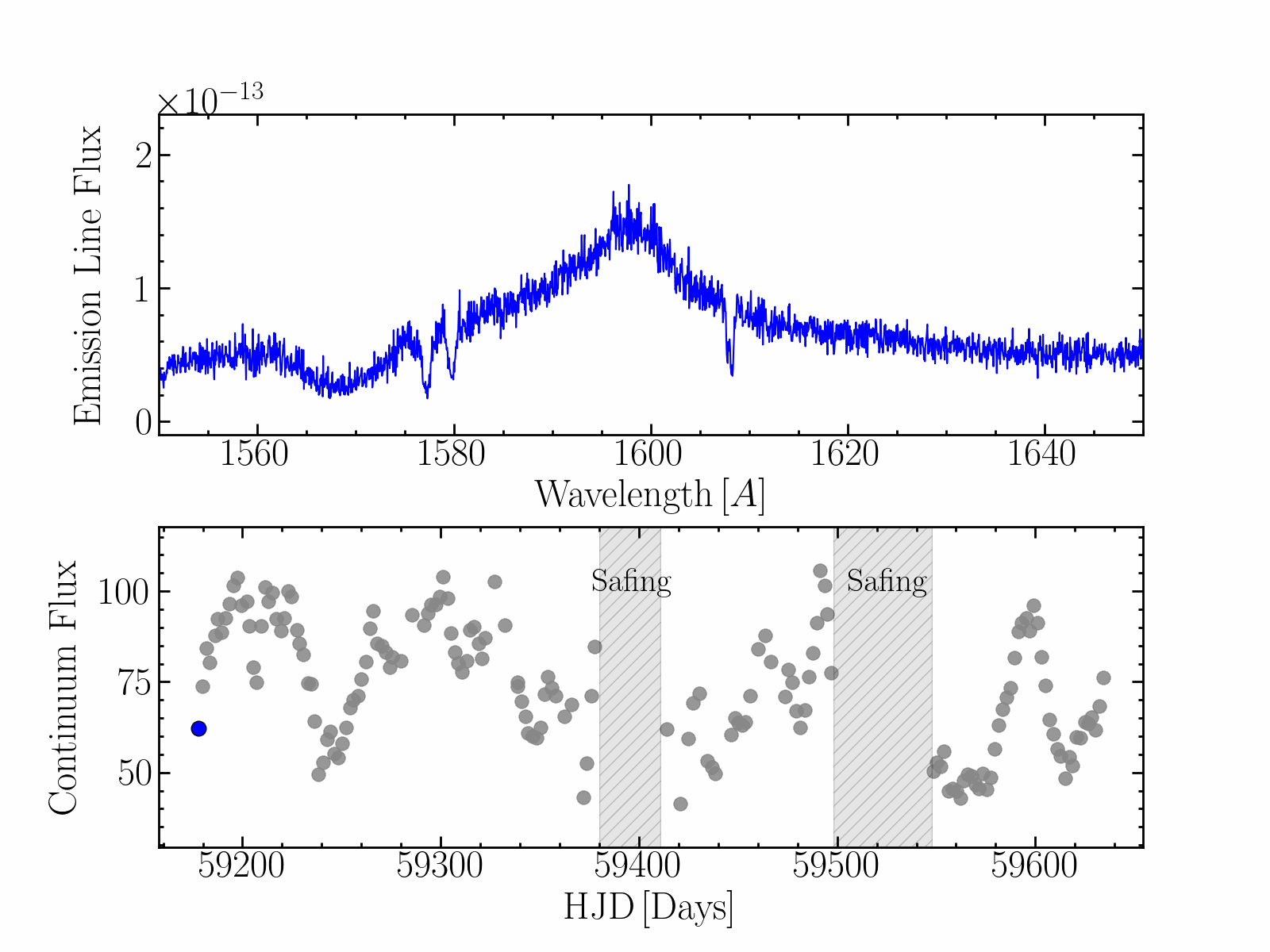Building a Black Hole Mass Census
I am an observational astronomer specializing in reverberation mapping studies of supermassive black holes. By studying the diverse nature of black hole accretion disks and their masses, I aim to build a comprehensive black hole mass census that extends to the peak of black hole growth at redshift ~5. My research leverages data from the Sloan Digital Sky Survey Reverberation Mapping (SDSS-RM) and the Hubble Space Telescope. I am also eagerly anticipating the wealth of data from the Rubin Observatory's Legacy Survey of Space and Time.
In addition to large-scale surveys, I conduct time-domain UV monitoring of quasars using the Hubble Space Telescope. This enables me to delve deeper into their UV properties and explore the connections between accretion disk size, black hole mass, and other fundamental physical processes.
The SDSS-RM collaboration's adoption of multi-object reverberation mapping (MOS-RM) has led to a substantial increase in the number of targets with reliable mass measurements. As depicted on the left, approximately 300 additional targets have been characterized
Cracks in the Foundation of Single-Epoch Black-Hole Mass Estimates
Black hole mass is a crucial piece of the puzzle when it comes to understanding how these cosmic giants grow and evolve. Reverberation mapping is a powerful technique for measuring black hole masses, but it is significantly resource-intensive. To estimate black hole masses at greater distances, astronomers have relied on scaling relations derived from the limited local reverberation mapping sample. However, recent observations (Grier et al. 2017, Shen et al. 2024) have revealed that these scaling relations can be inaccurate, leading to significant uncertainties in black hole mass estimates. This means that our current understanding of black hole growth and evolution may be fundamentally flawed. I am leading an investigation of the reliability of black-hole mass over cosmic time using two luminous quasars that are a significant outlier from the canonical radius-luminosity relation.
Unraveling the Mysteries of Seyfert 1 galaxy Mrk817
I'm involved in the AGN STORM 2 project, a comprehensive study of the Seyfert 1 galaxy Mrk 817, where we have used the Hubble Space Telescope to monitor Mrk817’s ultraviolet light with unprecedented detail, capturing changes every two days over 14 months. I contributed to the development of a specialized data reduction pipeline for the Hubble Space Telescope data and led the analysis of these observations.
Our analysis revealed significant variations in the response times of broad UV emission lines to changes in the central engine's radiation. This suggests the presence of an obscuring outflow that shields the UV lines from the ionizing continuum.
To visualize this, imagine a black hole surrounded by a cloud of gas, also known as the broad-line region (BLR). As this gas is ionized by the black hole's powerful radiation, we observed three primary phases in its behavior:
Phase A: A thick cloud of gas partially blocks the radiation from reaching the inner part of the BLR. This results in longer response times for the emission lines, as the outer gas takes longer to react to changes in the radiation.
Phase B: The obscuring cloud moves away, allowing the radiation to reach the inner part of the BLR. This leads to shorter response times for the emission lines.
Phase C: The obscuring cloud clears, allowing the radiation to reach all parts of the BLR. This results in a more consistent response from the emission lines.
STScI’s Discovery Seminar Series:
You can find more information about my research at Space Telescope Science Institute Discovery Seminar Series on Reverberation Mapping the Inner Environments of Supermassive Black Holes (my presentation portion begin at 33:00).



